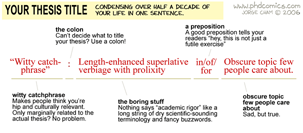I’m currently reading the book Boys Adrift by Leonard Sax, MD, PhD. Though I will surely write a detailed review and critique of his work when I finish it, I found a statement in his book so intriguing that I believed immediate mention to be warranted. About halfway through the sixth chapter, which is about the “Failure to Launch” phenomenon in the United States, Sax includes a collection of emails, NPR-sponsored chat transcripts, and letters he has received from various individuals; some parents, some successful women with parasitic boyfriends, and some of the so-called “slacker[s]” themselves (2007, p. 147). The statement that I found so interesting was, much to my surprise, from a 27-year-old “married” man currently attending “grad school” for a “doctorate in medieval literature” (Sax, 2007, p. 148).
Given Sax’s overt position against video games and the use of pornographic materials as a substitute for real sexual encounters (about which you will have to purchase his book in order to find out more information), this individual felt compelled to offer an interesting–be it brief and unsubstantiated–opposing perspective. This man, who posits that video games can help people temporarily “feel like they’re doing something significant,” also discusses another interesting aspect of the reliance on virtual constructs (Sax, 2007, p. 149). He, when referring to the vivid scenery in many video games, states that “the desire for beauty is very strong–so strong that one might accept all sorts of false substitutes if one couldn’t find the reality” (Sax, 2007, p. 149).
This quote, in my opinion (and not backed by any empirical evidence), is fascinating in that it could potentially appeal to the common sense of many post-modern technologists, virtuosos, academics, and artists (myself included in that penultimate category). Many times I have found myself mesmerised by the beautiful pieces of digital artwork found on DigitalBlasphemy and DeviantART, as well as the work of other prominent and not-so-prominent artists. Many of these pieces are not inspired by actual photographs, or architectural / environmental realism, but rather are spawned solely from the imaginations of the individuals who created them. Further, I believe that this statement about the “desire for beauty” (Sax, 2007, p. 149) also includes beauty and desire that may be considered societally or socially taboo, or worse yet, simply inappropriate.
Without going off on a rant about the unfathomable atrocity of a larger society dictating what are and are not appropriate manifestations of beauty, I want to address the underlying premise that a social structure is capable of judging schemata as complex and intricate as human emotion. David Humes, in one of his many sociopolitical essays, says that “beauty is no quality in things themselves: It exists merely in the mind which contemplates them; and each mind perceives a different beauty” (1987, Part I, Essay XXIII, para. 8 ). If this statement, which has morphed from and into many different syntacies throughout the centuries, is held to be true, then society and other groups have neither the ability nor the power to decide what should and should not be seen as beautiful. That being said, the statement regarding “false substitutes” of beauty holds true even more so, given that the subjects one finds beautiful may not be available in reality without being accompanied by stigmatisation and persecution.
Again, this is merely one minute excerpt from a book full of information and insight (some of which is controversial), and a subsequent book review will follow in the weeks to come.
|:| Zach |:|
REFERENCES:
Hume, D. (1987). Essays: Moral, political and literary (E.F. Miller, Ed.). Indianapolis, IN: Liberty Fund. (Original work published 1742).
Sax, L. (2007). Boys adrift. New York: Basic Books.


